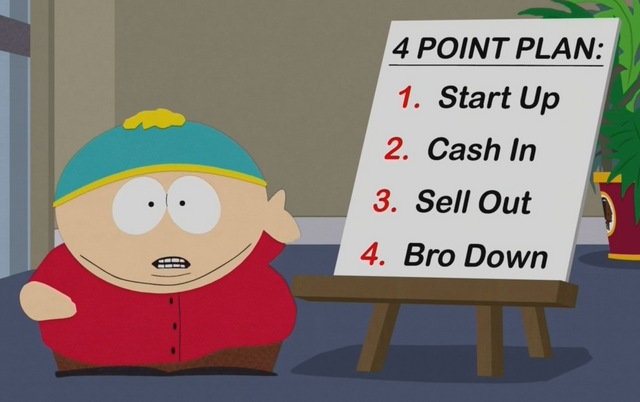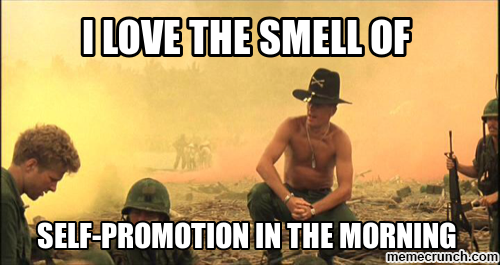Marketing Open Source Projects [Part 3] - Sharing The Dream - Communicating Your Open Source Vision
In your mind, your open source project is innovative, feasible and potentially beneficial to the world. But that information exists purely in your mind, and communicating it can often be challenging, especially if you're a developer trying to explain your vision to someone who is not quite as technical as you. While this chapter, much like the previous one (Naming Your Open Source Project), is relevant to all businesses, when it comes to open source, there are a few unique points you will not find mentioned in traditional business development guides.
Why You Need To Produce Content
Most developers are not writers. Sure, they can type faster than they can think, but verbalizing thoughts and concepts in written text can often be a challenge for them. Speaking can be even worse. However, it's critical that you put in the time and effort in writing down everything in your head that relates to your project - from product idea(s) and marketing plans to development frameworks and server requirements.
If it helps, grab an alcoholic drink and remember - this content is for you, first and foremost. Later you can adjust it to fit the general public, but through the description and marketing pitch of your product, you get to brainstorm with yourself (or your team) from a whole different perspective - that of a marketer - to look deeper into the value, feasibility and scalability of your vision.
A good start
Your Message Target Audience
As with every marketing activity, the first step is the definition of your target audience. Who are you speaking to? Is it contributors and developers you want to join your project? Is it end users you want using your product? Perhaps you're looking for investors to grow your project?
It's easy to say "everyone" when trying to type up a vision. Of course you want the whole world to dream with you the spectacular dream that is your project, but it's critical that you define the audience for every message you send out into the world. What this means is that you might need to create a number of "messaging worlds", each with content and value for a different target audience.
For example, the information that would attract contributors to take part in your project is vastly different than the message you need to be communicating to potential users. In addition, information that is critical to investors is in no way interesting or relevant to said potential project users.
Gone in 30 Seconds - Your Elevator Pitch
One of my favorite ways to start defining the messaging to communicate a vision of a project or company is writing an elevator pitch. Not to be confused with a sales pitch, the goal of the elevator pitch is not to sell, but rather to invoke interest in the person you are pitching to.
Your elevator pitch may vary from audience to audience, but at its base, it answers a number of important questions you must know the answer to.
- What is your project and what does it do?
- Why is your project needed? What problem does it solve and what audience does it serve?
- How can this problem be solved?
- Why are YOU (or your organization) and your project in a perfect position to create this solution?
Having defined your target audience (or audiences) before crafting your elevator pitch should make it much easier to choose the information to squeeze into that short elevator ride with your potential contributor, investor, user or partner. My personal recommendation is creating a number of elevator pitches - one for each target audience.
FAQ It All
If your elevator pitch worked, your target audience will want to know more and will have questions. You should have the answers prepared in advance.
Consider the information you left out in the pitch, such as the technical details, bios of the project managers, milestones in the project or potential sources of revenues for your eventual product or products. Don't be afraid to go long and detailed in this Q&A, even if it means you'll need to split it into chapters. This internal document will be the base of your future content and communications strategy.
The Million Dollar Question
Two of the most challenging questions independent open source projects need to answer are the questions of funding and revenue sources. You need to pay for your project to grow - from bounties to developers to ad budgets. Putting aside the utopian philosophy of free and open source software, you need to consider the sustainability of your project development and promotion to its target audience.
There is no shortage of open source project monetization schemes - from hosted applications to in-app ads and affiliate partnerships. Figuring out which is the best for you and project is better done sooner than later, especially if you're looking to get partners or investors aboard.
Beyond Words
The "napkin pitch" is another term often used in marketing, especially when it comes to designs, diagrams and things best explained visually. The idea is to limit yourself to the size of a napkin (and a texture that is unforgiving to errors), but I recommend practicing on a whole stack of them if you don't yet have something resembling an interface, product components diagram or company structure.
Having your vision sketched out will not only give you an overview of "the big picture", helping you brainstorm, but will also be beneficial in starting to build your marketing strategy and product roadmap.
* All images used in this post are either memes or public domain via pixabay.com
-=-=-=-=-
P.S. The previous chapter in this series concludes with a promise to discuss the visual aspects of open source project branding in the next. However, I decided that the verbal definition and effective communication of the project and organization vision and goals are more important than the choice of logo and color scheme for a brand.








This series of posts by you has been, and continues to be, a pillar of excellence. You are, as I have said many times to many people, the best marketing mind I know. And you are excellent in communicating your knowledge. Thank you for this post.
Your contribution has been evaluated according to Utopian policies and guidelines, as well as a predefined set of questions pertaining to the category.
To view those questions and the relevant answers related to your post, click here.
Need help? Write a ticket on https://support.utopian.io/.
Chat with us on Discord.
[utopian-moderator]
Thank you for your review, @didic!
So far this week you've reviewed 22 contributions. Keep up the good work!
Thanks for the open source information. Its really helpful
Posted using Partiko Android
going to be reading this one in great detail!
I just found this, and I can take your advice to heart. Thanks.
This is really helpful, thank you for taking your time to create this! PS I also fucking love diagrams ;)
You have such a great business mind! This article is getting bookmarked.
Hi @techslut!
Your post was upvoted by @steem-ua, new Steem dApp, using UserAuthority for algorithmic post curation!
Your UA account score is currently 6.097 which ranks you at #267 across all Steem accounts.
Your rank has improved 2 places in the last three days (old rank 269).
In our last Algorithmic Curation Round, consisting of 237 contributions, your post is ranked at #3. Congratulations!
Evaluation of your UA score:
Feel free to join our @steem-ua Discord server